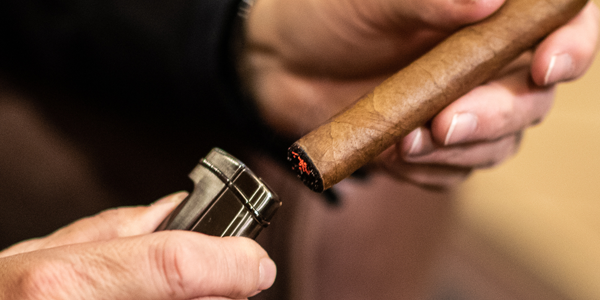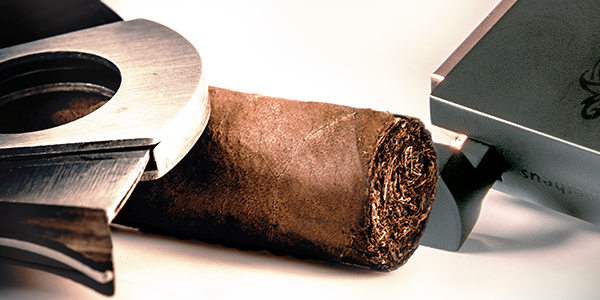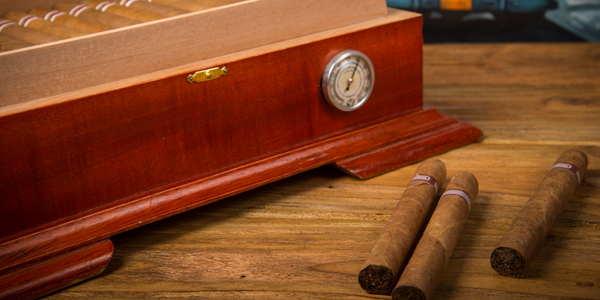How to Fix a Cigar That Keeps Going Out
Few things are more frustrating for an aficionado than a cigar that won’t stay lit. The reasons why a cigar keeps going out stem from too much humidity, poor construction, and plain old operator error. Here are the most common culprits that can cause your cigar to go out while you’re smoking it and how to avoid them.
Light Your Cigar Correctly
First, did you light your cigar correctly? Whether you light your cigar with matches, a torch lighter, or a soft flame, it’s imperative to rotate the foot of your cigar over the flame to fully toast it. When you start puffing, continue to rotate the cigar to ensure the binder, filler, and wrapper tobaccos have fully ignited. If part of your cigar is unattended by the flame, and it fails to burn in sync with the rest of the tobacco, your cigar can go out. After your cigar is lit, inspect the cherry, and gently blow on it. You should observe an even, red-orange glow. If dark spots linger, the cigar isn’t fully lit, and you should touch up those areas with your lighter. Also, if you’re smoking in the wind, light your cigar behind or under any available shelter to minimize the impact a breeze can have. Rotating your cigar over the flame is especially important outdoors. Be patient. It takes longer to fully light a cigar outside.
Cigar Is Over-Humidified
One of the biggest indicators you’re over-humidifying your cigars is that they won’t stay lit. If your cigars are too soft and spongy, and you’re constantly relighting them, they’re too wet. Luckily, it’s easy to fix over-humidified cigars. Premium cigars should be stored at approximately 70% RH (relative humidity) and 70 degrees Fahrenheit. If your cigars are too moist, leave them out of the humidor for a day or so before you smoke them.
Monitor your humidity regularly with a digital hygrometer. The only reason to store your cigars over 70% RH is in the case of a leaky humidor seal which allows humidity to regularly escape, necessitating a higher RH to make up the difference. If you store your cigars in an airtight environment like an acrylic humidor, no humidity escapes, and it’s easier to over-humidify your cigars. Learn what an acceptable consistency is for your favorite cigars and check them by performing an occasional pinch test.
Not Puffing Frequently Enough
A cigar will naturally burn out after a few minutes if you’re not puffing on it. It’s best to pause for around thirty seconds in between draws. This gives your cigar time to develop a firm ash, and you can better access its flavor by waiting a moment between puffs. However, if you set your cigar down for several minutes, don’t be surprised if it goes out. Because the tobacco in a premium hand-rolled cigar is humidified, it won’t continue to burn beyond a couple minutes if you stop puffing on it.
Cigar Is Tunneling or Canoeing
Two common cigar problems include tunneling and canoeing. In both scenarios, the binder, filler, and wrapper tobaccos are not combusting at the same rate. A torch lighter is best for remedying a cigar that’s tunneling or canoeing, as you can relight any areas of the cigar that are not staying lit with pinpoint precision. If the tobaccos fail to burn in sync, and the cigar continues to go out, there could be looming issues with the cigar’s construction that you can’t fix by relighting it.
Cigar Is Plugged
A cigar is plugged when you can’t draw air or smoke through it. Generally, you can tell if a cigar is plugged as soon as you begin to light it. The draw is very tight or labored, and after you get the cigar to burn, it goes out because too little oxygen is passing through it as you smoke. A cigar can be plugged because the roller mistakenly included too much binder or filler tobacco when the cigar was assembled, or the cigar is over-humidified, or too much moisture from your mouth has interfered with the draw.
The best way to loosen up a tight draw on a cigar is to cut the cigar a little deeper. If that doesn’t work, insert a piercing tool, and gently open the obstructed draw. Many aficionados will attempt to open a hard draw with matchstick, a toothpick, or by inserting the end of a paper clip.






